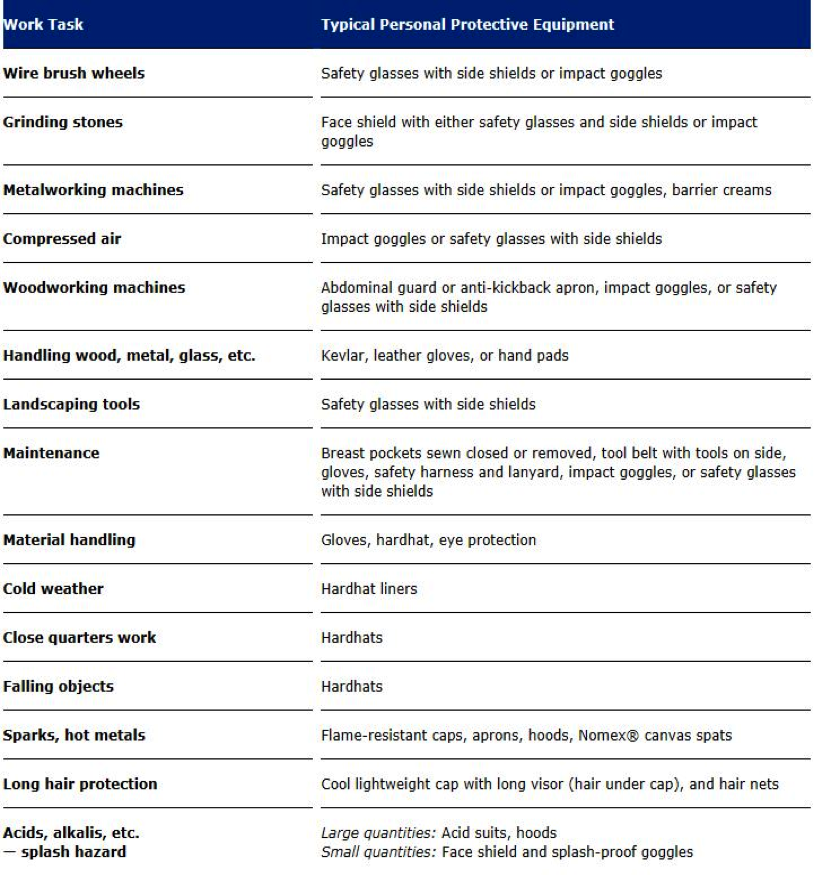
Thousands of people are blinded each year from work-related eye injuries that could have been prevented with the proper selection and use of eye and face protection. Eye injuries alone cost more than $300 million per year in lost production time, medical expenses, and worker compensation. (Source: Occupational Safety and Health Administration) Failure to adequately assess the workplace for potential hazards and identify appropriate personal protective equipment (PPE) not only results in thousands of eye injuries each year, it is also responsible for numerous injuries to the hands and arms, torso, feet, and head.
PPE Hazard Assessment
To ensure employees wear appropriate PPE for their works tasks, OSHA 29 CFR 1910.132 (d)(1) requires employers perform a PPE assessment to determine if hazards are present, or likely to be present, that necessitate the use of personal protective equipment. In addition, 29 CFR 1910.132 (d)(2) requires a written certification of the assessment.
Hierarchy of Controls
A systematic review of each work task is needed to identify potential hazards. Prior to requiring employees to wear PPE, however, the hierarchy of controls should be utilized to eliminate or reduce the existing hazard(s) to avoid the need for PPE. The hierarchy of controls states that hazards should be controlled in this preference:
- Elimination
- Substitution
- Engineering Controls
- Administrative Controls
- Personal Protective Equipment
PPE should be selected only after the first four options have been evaluated and found to be infeasible.
Personal Protective Equipment for Various Exposures
Once the hazard assessment is complete, appropriate PPE must be selected. Listed below is a summary of typical PPE for various work tasks based upon National Safety Council, OSHA, and ANSI requirements and recommendations.

